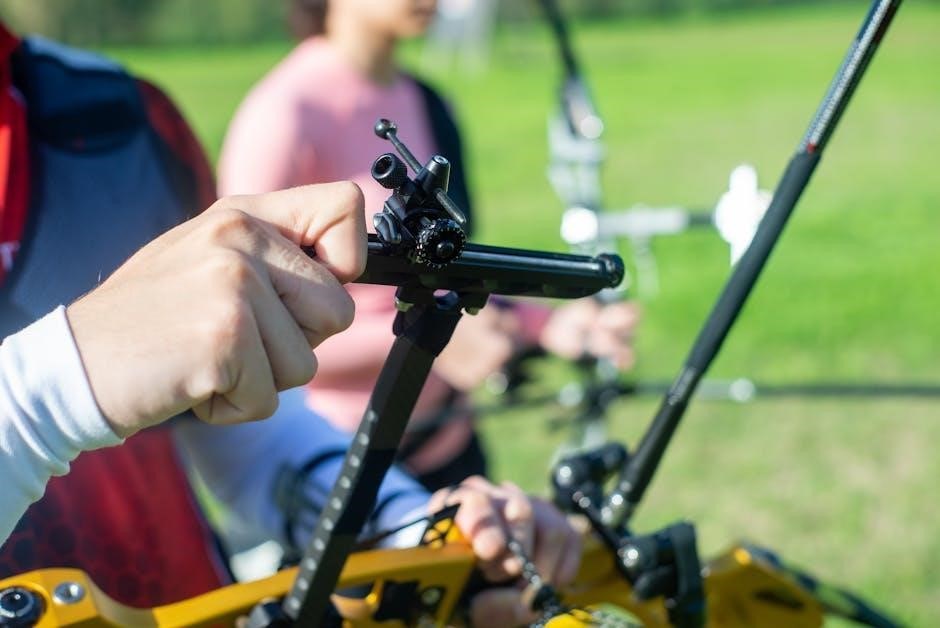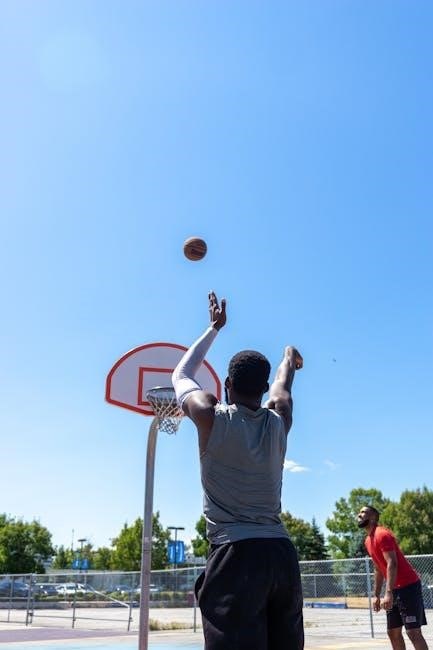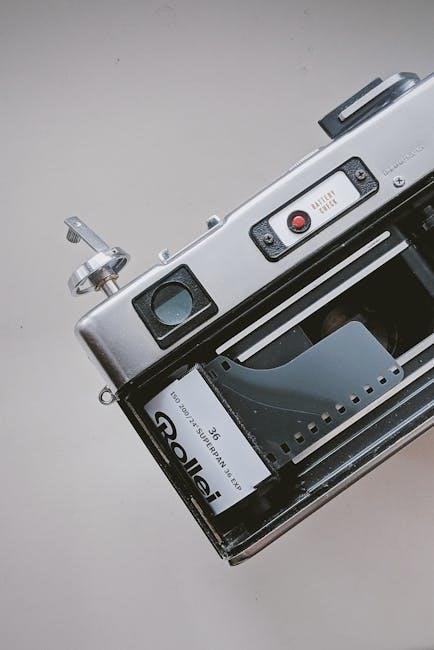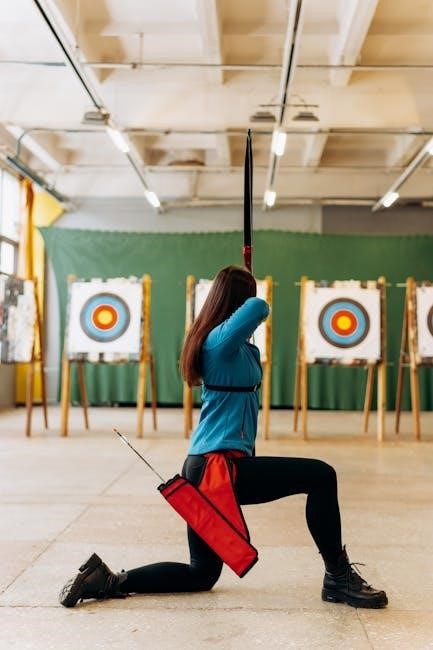Shooting Sports Manual BSA: An Overview
The BSA National Shooting Sports Manual serves as a comprehensive guide. It offers direction for implementing shooting activities in Scouting programs. This manual encompasses various shooting sports activities. It provides essential guidance for safe and effective program execution. It emphasizes age-appropriate activities and safety protocols. This ensures a positive and secure experience for all participants.
Updated Information and Supplements
Due to significant changes and additions within BSA Shooting Sports since the original manual’s publication, it’s crucial to acknowledge the existence of corrected and supplemental information. These updates are essential for maintaining current best practices. They should be followed until a revised Shooting Sports Manual is officially released.
To access updated training materials, individuals are directed to the BSA Learn Center. Specifically, they should seek out resources related to Range Activity Safety; This online platform offers the most current guidelines and procedures. It ensures that all participants are well-informed about safety protocols and activity management.
For further details regarding Scouting’s Range and Target Activities, refer to the Guide to Safe Scouting. You can also consult the National Range and Target Activities Manual. These resources provide additional context. They offer in-depth information on the safe and responsible conduct of shooting sports programs. It is crucial to consult these resources to ensure compliance with all applicable regulations and best practices.
For questions about Shooting Sports Courses, contact the Class Coordinator for details. Also remember name changes on 9/1/24.

Range and Target Activities: New Terminology
Effective September 1, 2024, a significant shift in terminology has been implemented within Scouting’s shooting programs. This change affects all levels, encompassing Cub Scouting, Scouts BSA, Venturing, and Sea Scouting; The term “Shooting Sports” will now be formally known as “Range and Target Activities.” This updated nomenclature reflects a broader scope. It emphasizes the diverse range of activities beyond traditional shooting sports.
This transition aims to create a more inclusive and descriptive label for the various activities offered. It includes archery, BB guns, slingshots, and air rifles, alongside traditional firearms. The new terminology acknowledges the focus on target-oriented skills and safety practices. This aligns with the educational and developmental goals of Scouting.
The change to “Range and Target Activities” does not alter the core principles of safety, training, and responsible conduct. All existing guidelines, procedures, and certifications remain in effect. Leaders and participants must familiarize themselves with the updated terminology. They should ensure consistent usage across all program materials and communications. This shift will help promote a clear and consistent understanding of these activities within the Scouting community.

Cub Scout Shooting Sports Restrictions
Cub Scout shooting sports programs have specific limitations. These restrictions are in place to ensure safety and age-appropriateness. These programs can only happen at the district or council level. This means that individual Cub Scout packs cannot independently organize shooting activities.
Archery and BB gun shooting are limited to specific settings. These settings include day camps, Cub Scout/Webelos Scout resident camps, and council-managed family camping programs. They are also permitted at council activities. These activities must ensure properly trained supervision. This ensures that all participants are under the guidance of qualified instructors.
As a reminder, the Guide to Safe Scouting dictates that Cub Scout shooting sports activities are offered under official council or district oversight. This prevents unauthorized or unsupervised shooting events at the unit level. These limitations protect younger scouts and guarantee adherence to safety protocols. They provide a structured and controlled environment for introducing shooting sports to Cub Scouts.
These guidelines help maintain a safe and enjoyable experience for all involved in Cub Scout shooting activities.
Acceptable Training for Firearm Programs
The Boy Scouts of America recognizes specific organizations. These organizations provide acceptable training for firearm programs. This ensures that all shooting activities are conducted safely and professionally. The BSA acknowledges the National Rifle Association (NRA) for firearm program training. NRA-certified instructors possess the necessary knowledge and skills. These skills are needed to conduct safe and effective shooting sessions.
These instructors must be certified. They can provide comprehensive instruction on firearm safety, handling, and marksmanship. This comprehensive instruction ensures that participants learn best practices. They also learn how to mitigate risks associated with shooting sports.
Besides the NRA, other organizations may offer acceptable training. These training programs must align with BSA’s safety standards and guidelines. It’s crucial to verify that any training program is officially recognized by the BSA. This verification can be done before participating in or leading firearm activities.
Proper training ensures that all individuals involved. This includes both instructors and participants. They possess the knowledge and skills necessary to conduct shooting activities responsibly. This upholds the BSA’s commitment to safety in all shooting sports programs.
Importance of Shooting Sports Safety
Shooting sports safety is of paramount importance; It is especially critical in all Boy Scouts of America (BSA) activities. Safety must be the top priority whenever Scouts participate in shooting activities. Strict adherence to safety protocols minimizes the risk of accidents and injuries. It fosters a secure and enjoyable learning environment.
Several resources are available to help ensure shooting sports safety. These resources include the National Shooting Sports Manual. It provides comprehensive guidelines for conducting safe shooting programs. The Guide to Safe Scouting also offers valuable information on safety practices.
Following BSA’s Shooting Sports Guidelines is essential for running a safe program. These guidelines cover various aspects of shooting sports. Aspects include range setup, equipment maintenance, and participant supervision.
Proper training is crucial for all individuals involved in shooting sports. This includes instructors, range safety officers, and participants. Training programs should cover firearm safety, handling, and marksmanship techniques. They should also cover emergency procedures.
By prioritizing safety, the BSA can ensure that shooting sports activities are conducted responsibly. This responsible conduct creates a positive and enriching experience for all Scouts.
National Shooting Sports Manual (Outdated)
The National Shooting Sports Manual for the Boy Scouts of America, while once a vital resource, is now considered outdated. It is essential to acknowledge that significant changes and additions have occurred in BSA Shooting Sports since its release. Consequently, relying solely on the manual may lead to using information that is no longer current or accurate.
Users should be aware of the manual’s limitations. They should seek updated information and supplements to ensure they are following the most recent guidelines. These updates address modifications in policies, procedures, and best practices within BSA Shooting Sports.
Despite its outdated status, the manual may still offer some valuable background information. However, it should not be considered the definitive source for current practices. Always prioritize updated training materials and resources available through the BSA Learn Center and other official channels.
Consult the Guide to Safe Scouting and the National Range and Target Activities Manual for additional details. Staying informed about the latest changes ensures the safety and effectiveness of shooting sports programs.
Resources for Safe Shooting Programs
Ensuring the safety of shooting sports programs is paramount. Several resources are available to assist leaders in conducting secure and enjoyable activities. The BSA provides comprehensive guidelines. These must be followed diligently to mitigate risks and promote responsible shooting practices.
The National Shooting Sports Manual, despite being outdated, offers foundational knowledge. However, it should be supplemented with current information. The Guide to Safe Scouting provides essential safety protocols and procedures. The National Range and Target Activities Manual offers specific guidance for range operations.
The BSA Learn Center provides access to updated training modules. These modules cover range activity safety and other relevant topics. The National Rifle Association (NRA) offers acceptable training for firearm programs. USA Archery (USAA) provides instructor and coach manuals for archery programs.
Additionally, local council resources, such as the NCAC Shooting Sports Page, offer valuable information. This includes links to various resources and program updates. Utilizing these resources ensures adherence to BSA’s Shooting Sports Guidelines and fosters a safe, fun program.

BB Gun Program Exclusion from Rifle Shooting Levels
The Boy Scouts of America (BSA) has specific guidelines for shooting sports. These guidelines differentiate between BB gun programs and rifle shooting programs. The BSA’s BB gun program is explicitly excluded from the Five Levels for Rifle Shooting. This distinction reflects the different skill sets, equipment, and safety considerations associated with each activity.
The National Shooting Sports Manual provides information on Cub Scout BB gun shooting. It is important to note that Cub Scout shooting sports programs, including BB guns, are restricted to district or council levels. This means that BB gun activities are not permitted at the unit level. They can only occur during official council or district events.
This restriction ensures that trained personnel oversee the activities. It provides a safer environment for young participants. The manual also specifies that archery and BB gun shooting are limited to day camps. They are also limited to Cub Scout/Webelos Scout resident camps. These activities are also limited to council-managed family camping programs. Furthermore, they are limited to council activities where properly trained individuals are present.
Adherence to these guidelines is crucial for maintaining safety and program integrity. It is also essential for ensuring a positive experience for all involved.

Action Archery Course Availability
Action Archery presents an engaging variation within the broader scope of shooting sports. It combines archery skills with dynamic movement. This creates a unique and challenging experience for participants. The BSA National Shooting Sports Manual provides resources related to Action Archery. It includes a sample course drawing.
The manual’s illustration serves as a blueprint for setting up an Action Archery course. It gives leaders a visual guide for constructing their own courses. These leaders can adapt the design to suit their specific needs and available space. While the manual offers a sample course, it’s important to note that the availability of established Action Archery courses may vary.
Councils and districts may offer organized Action Archery programs. These programs would provide access to pre-built courses and trained instructors. To determine the availability of Action Archery courses in a specific area, contacting the local council is advisable. They can provide information on scheduled events and program offerings.
If no pre-existing courses are available, units can utilize the manual’s resources to create their own. This requires careful planning, adherence to safety guidelines, and the supervision of qualified archery instructors;